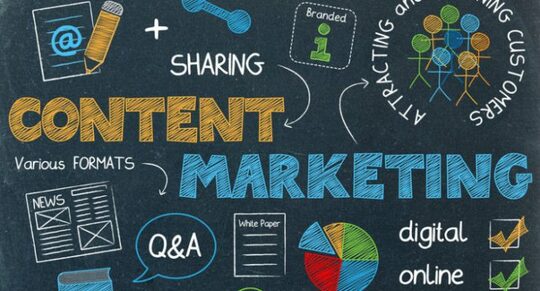You may have heard that WordPress is the most popular platform for creating websites, but you can’t be sure that WordPress is the right choice for you. Unlike Wix, Weebly, or Squarespace, WordPress is 100% free. So if you search for the word “WordPress Review,” you probably won’t find anything useful, as bloggers often write reviews about products for which they receive a commission.
To help make the right business decision, we have created the best WordPress software review that has the pros and cons of using WordPress so you can decide if WordPress is the right choice for your website.
What Kind of Websites You Can Make With WordPress?
WordPress is extremely flexible and this is the main reason it is a popular choice for website building. WordPress lets you create almost any original website!
You can use it to create a blog, create an online business website, create an online store, create a membership page, sell online courses, organize marketing, and much more.
No matter what website you want to create, there is probably a WordPress plugin (extension) for it. If you can’t find an add-on, you can easily hire thousands of developers to build it.
Who Should Use WordPress? Is WordPress Right For You?
The good thing about WordPress is that it adapts to your needs. It can be as simple and straightforward as you want, or sophisticated and complicated if you wish. Being fully responsible and entirely own, you can simplify things, control costs, and manage your site efficiently.
Over the years, we’ve helped thousands of beginners learn WordPress, and we’ve seen them quickly reach intermediate or even higher levels.
Here’s a simple checklist to help you determine if WordPress is right for you:
- You want to build a professional business website without spending a lot of money
- You can follow simple instructions to learn the basics
- You want to expand your online business with complete freedom
- You want to create a blog, portfolio, or personal website and make money online from it.
WordPress is the perfect platform for building a website if you’re okay with any of the above.
Who should not use WordPress?
While we sincerely believe that WordPress is the best platform for anyone looking to create a website, we understand that some users may not need WordPress and may have a better solution.
Here’s a simple checklist to help you decide if you need WordPress:
- They want to blog and don’t plan on raising funds or using third-party services.
- The limited functionality is adequate as long as you never have to write code, back up, or worry about upgrades.
- All you need is a small website, and no need to worry about growing your business on the website or using it to increase sales.
If you agree with these statements, you can use another platform. Search the list of our top blogging platforms and website builders to find the best suit for your needs.
Pros of WordPress as a CMS
Simple to use
WordPress has earned a reputation for being very easy to use. WordPress has predefined project options that allow users to click a few buttons to create a blog template with CMS plugins. Also, you do not need to know HTML to use the website. For those new to the blogosphere, choose the WordPress platform.
Attractive menu choices
WordPress 3.0 offers attractive menu options that make your website more beautiful and comfortable to navigate than Drupal or Joomla. Menus and pages can be organized according to your business needs.
Hundreds of no-cost themes
WordPress offers hundreds of free themes, so you can choose the template that works best for your business. Users can pay a premium account with a business credit card to give their website a more professional look.
Search engine rankings
Using WordPress can improve search engines. This means your website can be displayed on the first page of search results via Google or Yahoo if the appropriate keywords are entered carefully.
No-cost plugins
WordPress now has nearly 13,000 free plugins on the open-source platform. This number of add-ons is why the site was recognized as a CMS tool.
Able to expand beyond blogging
Using custom fields, users can extend their use of WordPress as a viable CMS tool in addition to blogging and categorizing. These custom fields (like “Flutter”) make it easier for newbies to create a CMS.
Pods CMS plugin
The Pods CMS plugin allows users to create different types of content without using their own CMS buttons.
Cones of WordPress as a CMS
WordPress scripting
Knowledge of WordPress scripts is required when users want to make changes such as B. changing or removing postal data.
Preference of a unique theme
Although WordPress has many attractive templates, some users choose to create unique themes. To make such a topic, users need to be very experienced in CSS (Cascading Style Sheet) terminology. Users with this knowledge could consider a more powerful CMS tool like Drupal.
Requires many plugins
WordPress requires a lot of plugins to have the same CMS project functions as Drupal or Joomla. Although these plugins are now available on your website, using them can slow down your page loading. Before you decide to use WordPress as a CMP tool, consider how many plugins you will need and how much it will affect your website’s overall performance.
Offline support for CMS
WordPress has been criticized for not providing significant stand-alone CMS support in the form of a Microsoft-based software suite. However, support from online communities is widespread.
Inconsistent platform
WordPress updates its functionality regularly, so it may not be the best choice for those looking for a more unified platform – for example, those looking to build an SMC for their website.
Conclusion
Due to its popularity, WordPress has become a platform for developers to write their plugins. These add-ons are called add-ons. There are even WordPress plugins, such as WooCommerce, the most popular e-commerce solution with its ecosystem of WooCommerce plugins such as WooCommerce product video. Such plugins are similar to a platform built on the WordPress platform itself.

